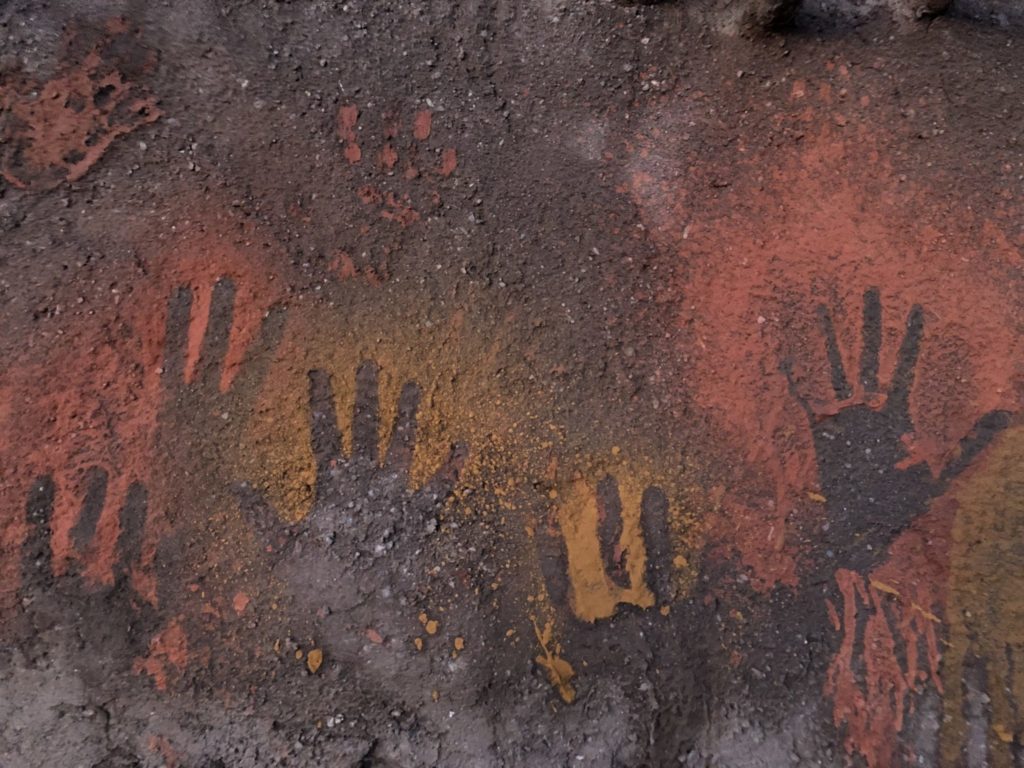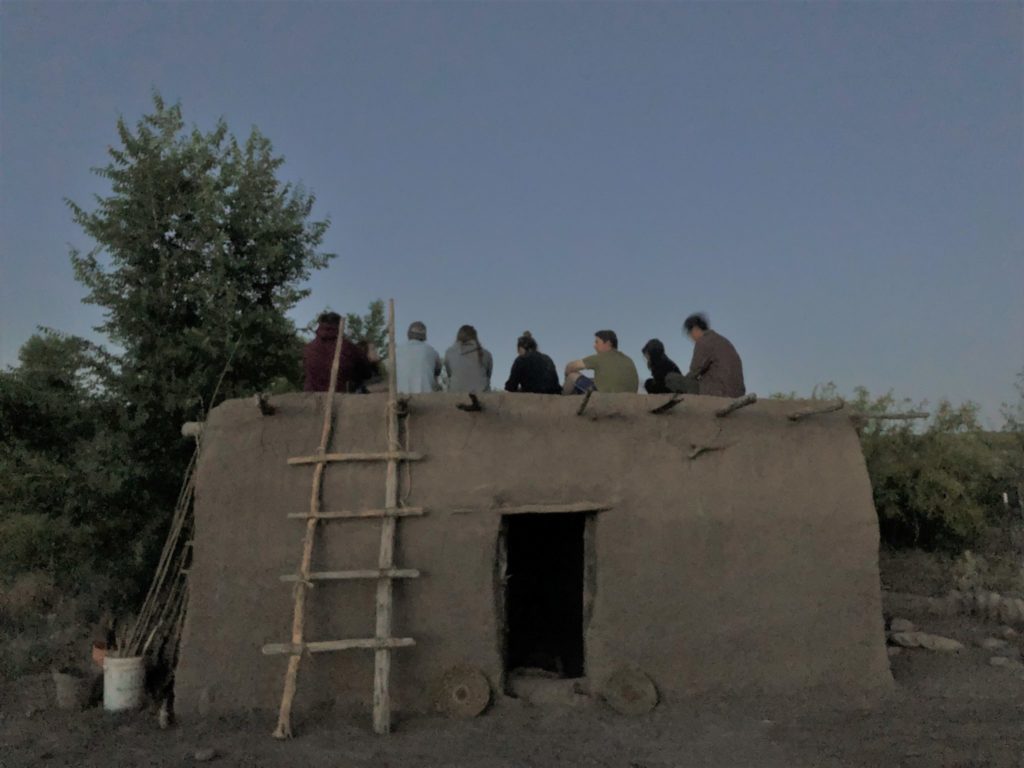- Home
- >
- Preservation Archaeology Blog
- >
- Learning with Adobe
(August 2, 2019)—I wanted to follow up on Leslie’s post about how our 2014–2015 adobe structure helped us interpret walls at the Gila River Farm site in 2019.
There is something almost metaphysical about mixing mud; it really is satisfying to get your hands into the wet earth and experience the process of placing the adobe on the walls. It definitely gives you a real respect for the labor it took to build structures like the pueblo at Gila River Farm.
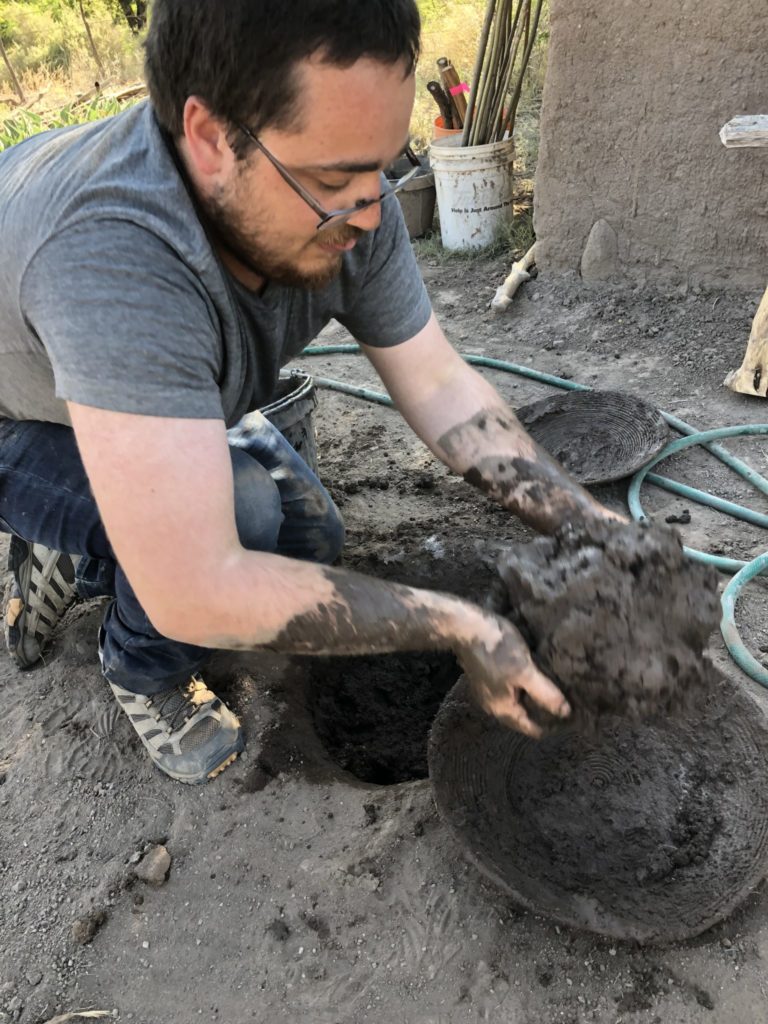
Over the years, we’ve been figuring out how to do the work easier and quicker, as well as more accurately, in terms of how people created these adobe walls in the past. One simple thing that really helps is keeping your mud-mixing pits close to the walls you are building! This really cuts down on the hauling and lifting of all that heavy mud.
Here are some of the questions we’ve had over the years we built two adobe structures—the first at our camp in Mule Creek, New Mexico, and the second at our camp in Cliff, New Mexico.
- What were walls made out of, and how were they constructed?
- What kind of dirt works well to build the walls, and how far did people haul it?
- How much water does it take to build a wall? How far did people haul that?
- How much work is it to haul in the cimientos (footer stones)?
- How much time does it take to harvest the main support posts and lintels?
- How far might you have to travel to gather construction materials?
- How does the damage we see on the ancient structures compare to the modern ones?
- How much of the dirt around the walls is from the erosion of the upper part of the walls?
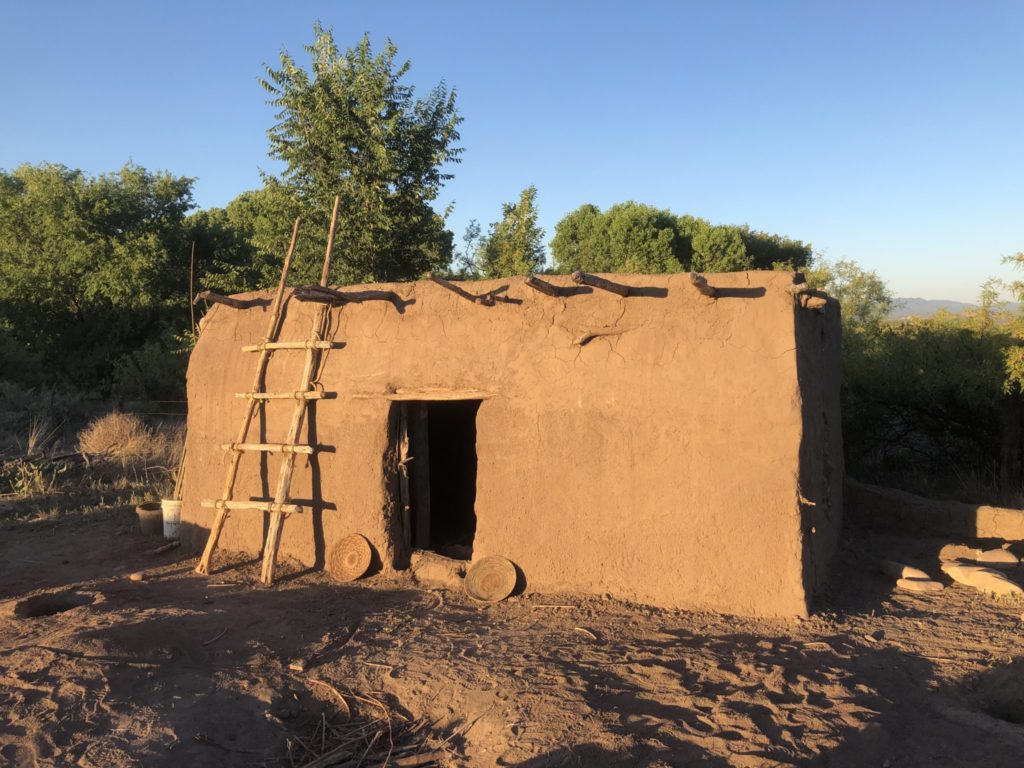
This was the fourth summer we had field school students working on the Cliff house. The first year, started late in the season and did not get much work done. Last year, we got most of the roof up, and we started building the front wall. This year, we finished the front wall and built the firebox and floor. We worked half days, mostly in groups of 2 and sometimes 3 students, making mud and placing it on the walls. Occasionally, we would work on it in the evenings, when some of us had spare time.
It is clear to me that at Gila River Farm large portions of the structure were built at the same time, and with quite a few more people than we used. Having the materials stockpiled would have really sped up the construction, as well. In other sites in the region, such as at Dinwiddie, it’s possible to see joints between construction episodes that were deliberately left in the walls. Some of the mudding episodes were quite large and encompass quite a few rooms being built at the same time.
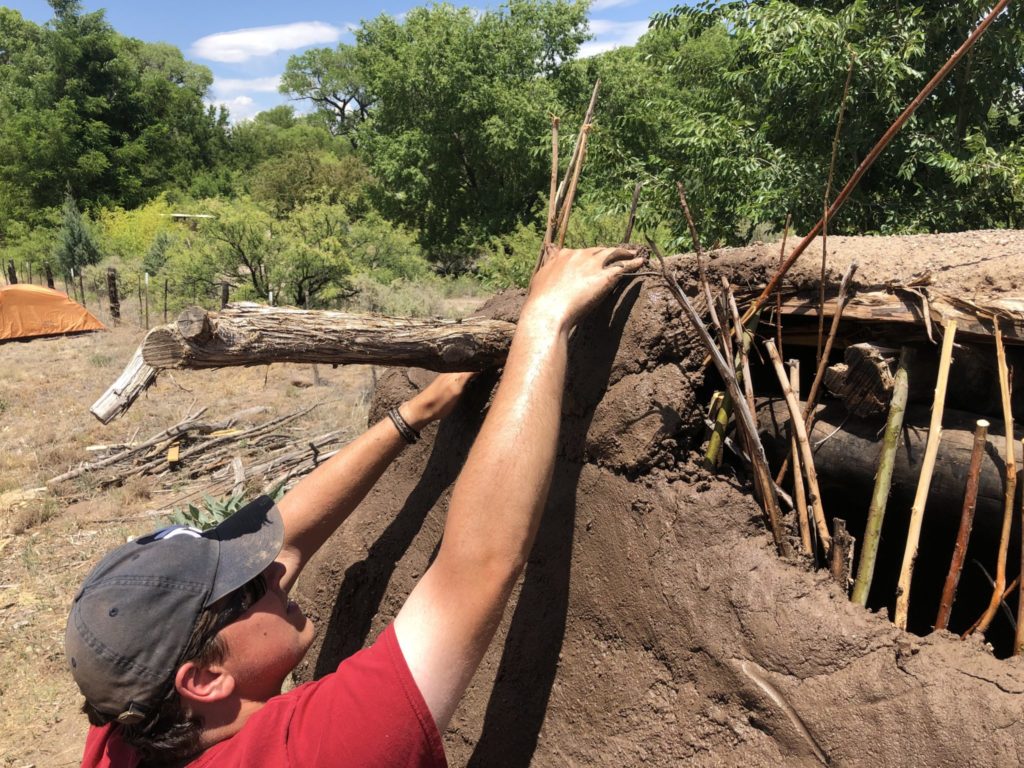
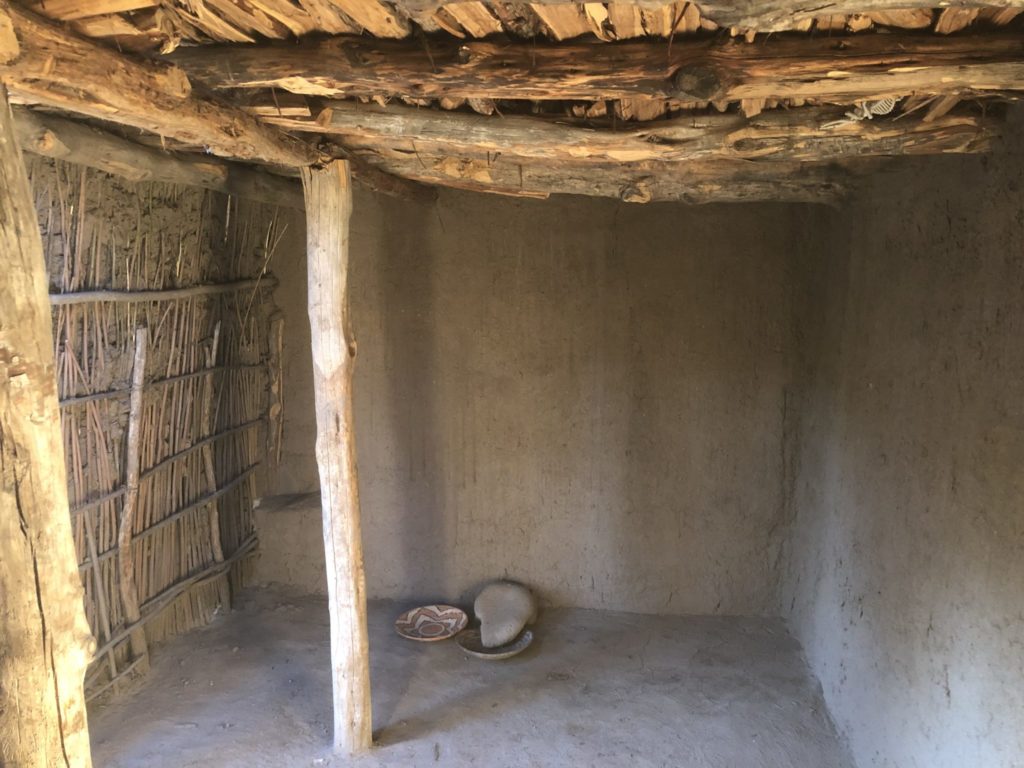
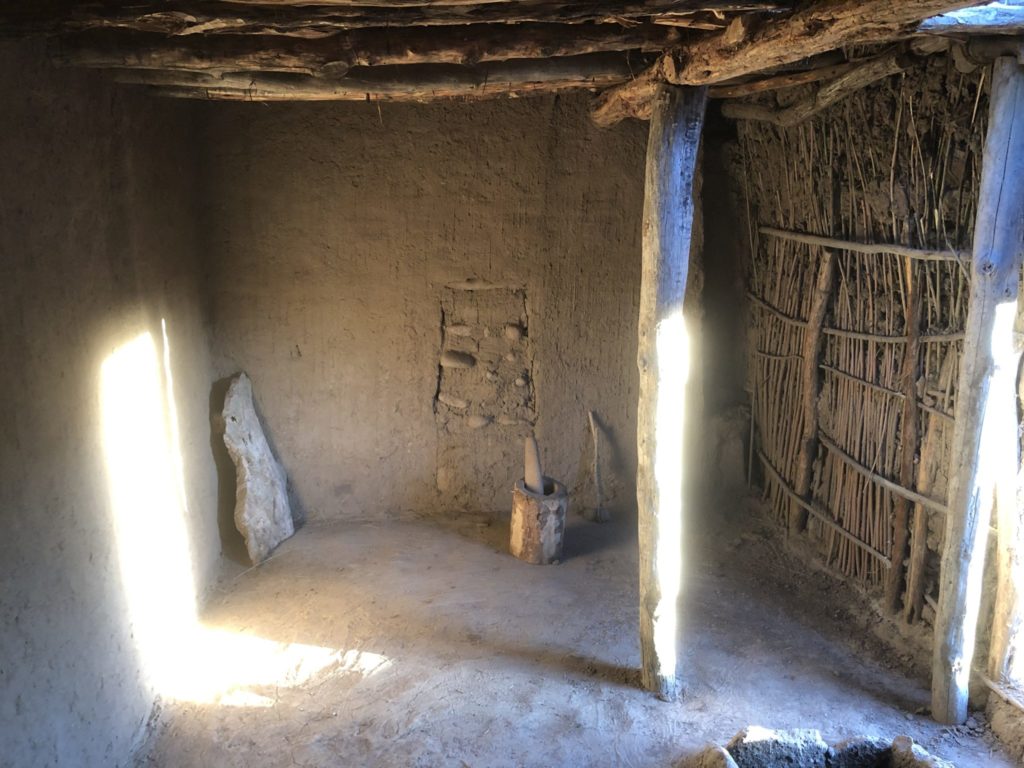
One problem we noted this year was termite damage on the willow wood in the jacal wall. There was no evidence of damage to any of the juniper poles or roof beams.
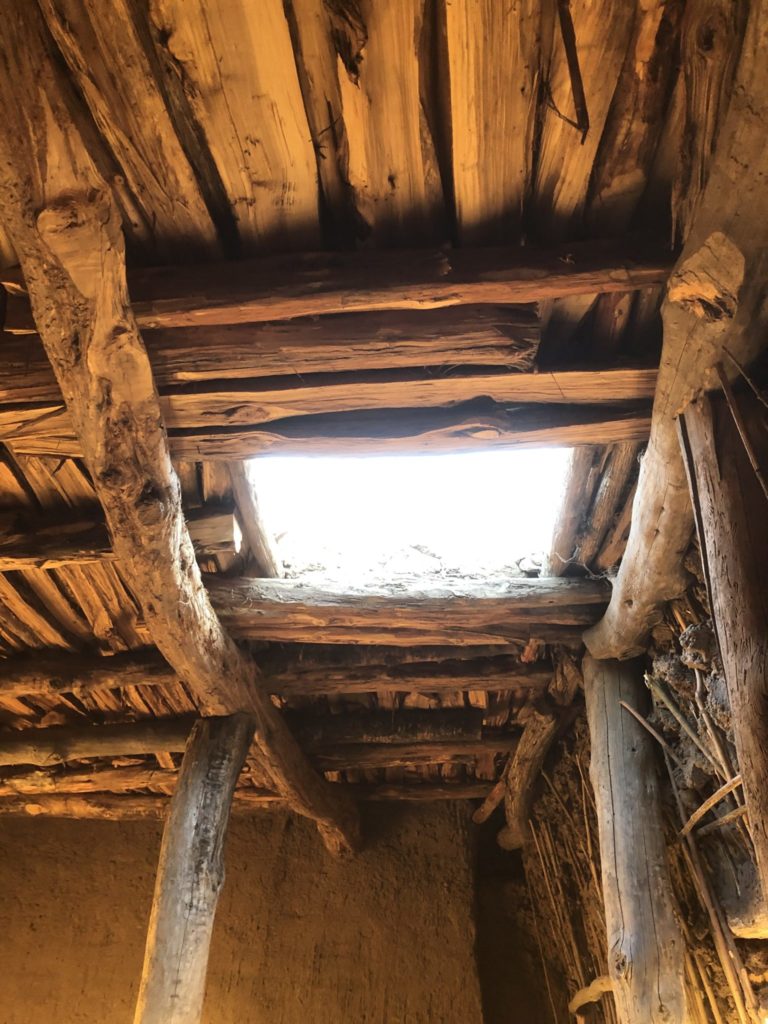
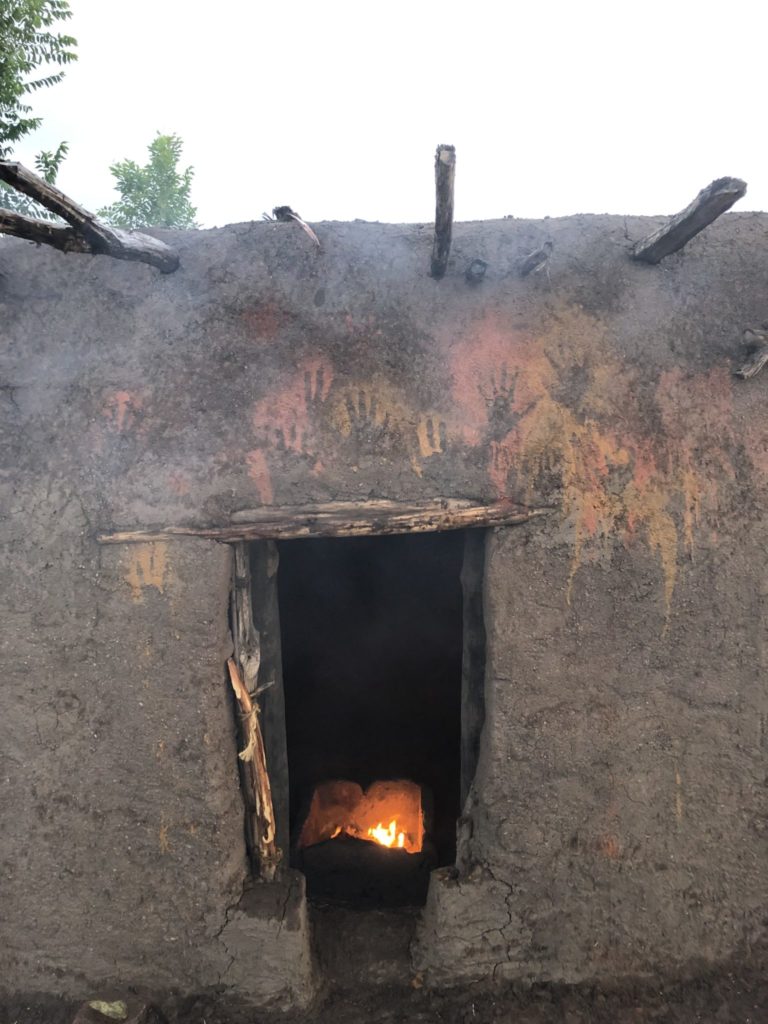
We have no evidence that people painted on their walls at either the Dinwiddie or Gila River Farm, but what is left of the walls is generally less than 50 percent. It was not uncommon to find artifacts at either site that had ground pigments on them, though.
